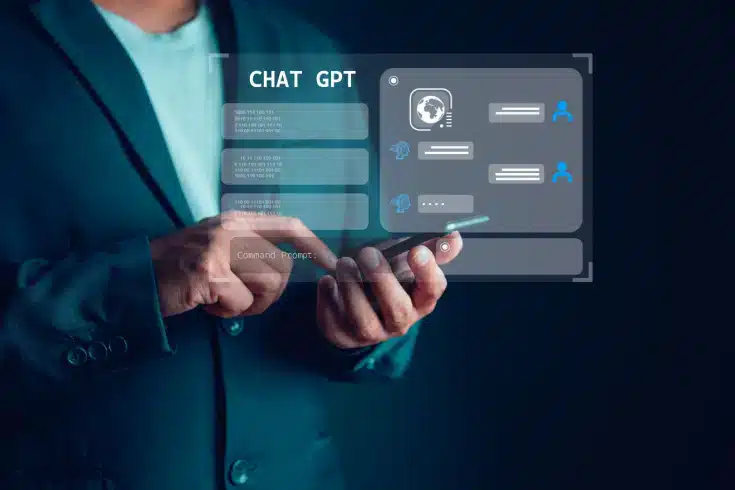Explaining the Application of the Japanese Subcontract Act to System Development and Penalties for Violation

In the IT industry, when a system developer outsources development to another developer, it is common to enter into a business outsourcing contract.
When entering into a contract, there is a law that the contracting parties, especially the parent company, should check. This is the Subcontracting Law (Act against Delay in Payment of Subcontract Proceeds, etc. to Subcontractors).
The Subcontracting Law is a law that stipulates the obligations, prohibitions, and sanctions of the parent company, with the aim of fair subcontracting transactions and the protection of subcontractors’ interests.
When outsourcing IT business between companies, how is the Subcontracting Law applied? Also, what are the penalties for violating the Subcontracting Law?
In this article, we will take a closer look at the categories of “System Development and Operation” and “Consulting Reports”, which are commonly outsourced in IT practice.
How is the applicability of the Subcontract Act determined?

The Subcontract Act (Japanese Subcontract Act) is a law that stipulates the obligations, prohibitions, and sanctions of parent companies with the aim of fairness in subcontracting transactions and protection of subcontractors’ interests.
When the Subcontract Act applies, subcontractors are heavily protected, while parent companies are subject to strict regulations.
Regardless of whether the legal nature of the contract, which is the content of the transaction, is a contract or a quasi-mandate contract, it will be subject to the Subcontract Act as long as it falls under the above.
However, not all transactions are subject to the Subcontract Act.
The Subcontract Act defines the scope of subcontract transactions that are subject to the Act from both the content of the transaction and the classification of capital. Below, we will explain about the content of transactions and the classification of capital.
Capital Classification

The Japanese Subcontracting Law stipulates the classification of capital for both parent and subcontracting businesses according to the content of the transaction.
This capital classification has four patterns, and transactions that fit these patterns, with specific content, are subject to the Subcontracting Law.
Pattern ①: The parent company’s capital exceeds 300 million yen and the subcontractor’s capital is 300 million yen or less
Pattern ②: The parent company’s capital is between 10 million yen and 300 million yen and the subcontractor’s capital is 10 million yen or less
The transactions subject to this classification include manufacturing contracts, repair contracts, information product creation contracts (limited to program creation), and service provision contracts (limited to those related to information processing).
System development and operation fall under this classification.
Pattern ③: The parent company’s capital exceeds 50 million yen and the subcontractor’s capital is 50 million yen or less
Pattern ④: The parent company’s capital is between 10 million yen and 50 million yen and the subcontractor’s capital is 10 million yen or less
The transactions subject to this classification include information product creation contracts (excluding program creation) and service provision contracts (excluding those related to information processing).
Consulting reports fall under this classification.
Transaction Details

Transactions subject to the regulations of the Japanese Subcontracting Law can be broadly divided into four categories depending on the content of the contract: ① Manufacturing contracts ② Repair contracts ③ Information product creation contracts ④ Service provision contracts.
System Development and Operation
System development and operation are likely to fall under ③ Information product creation contracts and ④ Service provision contracts. We will explain the definitions and specific examples of these transactions.
First, let’s look at ③ Information product creation contracts. The Japanese Subcontracting Law defines it as follows:
“Information product creation contracts” in this law refer to a business operator entrusting all or part of the act of creating an information product, which is the purpose of the provision or undertaking as a business, to another business operator, and when a business operator creates an information product for its own use as a business, it entrusts all or part of the act of creating the information product to another business operator.
Japanese Subcontracting Law Article 2, Paragraph 3 https://elaws.e-gov.go.jp/document?lawid=331AC0000000120
Furthermore, an information product refers to programs (software, systems, etc.), things composed of images, sounds, acoustics (TV programs, movies, etc.), and things composed of personalitys, figures, symbols (designs, reports, etc.).
There are three types of information product creation contracts:
・A business operator (principal operator) who provides information products for others’ use by selling, licensing, etc., entrusts the creation of those information products to another business operator (subcontractor)
For example, when a system development operator entrusts the development of a business card management system to be provided to users to another operator, or when a game software production and sales operator entrusts the creation of a game software to be sold to consumers to another operator.
・A business operator (principal operator) who has been entrusted with the creation of an information product from a user (client) entrusts the creation to another business operator (subcontractor) (re-entrustment)
For example, when a system development operator entrusts part of the development of a system that it has been entrusted with by a user to another operator (re-entrustment).
・A business operator (principal operator) entrusts the creation of an information product for its own use, which it creates as a business, to another business operator (subcontractor)
For example, when a web production operator entrusts part of the development of its own intranet site to another operator.
Next, the definition of ④ Service provision contracts is as follows:
“Service Provision Contracts” in this law refer to a business operator entrusting all or part of the act of providing a service, which is the purpose of the provision as a business, to another business operator (excluding the act of a construction business operator (referring to a construction business as defined in Article 2, Paragraph 2 of the Construction Business Act (Law No. 100 of 1949), the same shall apply hereinafter in this paragraph) entrusting all or part of a construction work (referring to a construction work as defined in Paragraph 1 of the same Article) that it undertakes as a business to another construction business operator).
Japanese Subcontracting Law Article 2, Paragraph 4 https://elaws.e-gov.go.jp/document?lawid=331AC0000000120
For example, when a software sales operator entrusts the maintenance and operation of the software to another operator, it falls under this category.
Consulting Reports
Consulting reports fall under the category of information products (refer to Article 2, Paragraph 6, Item 3 of the Japanese Subcontracting Law), so entrusting their creation falls under ③ Information product creation contracts.
Obligations and Prohibitions for Principal Business Operators as Defined by the Subcontracting Law

What obligations does a principal business operator have when the transaction falls under the Subcontracting Law? We will explain this along with the prohibitions.
Obligations
Under the Subcontracting Law, the following obligations are imposed on the principal business operator:
- Obligation to provide a written document detailing the content of the payment, the amount, the payment deadline, etc.
- Obligation to set a payment deadline for subcontracting fees
- Obligation to create and keep documents detailing the subcontractor’s payment, receipt of payment, payment of subcontracting fees, etc.
- Obligation to pay interest for late payment if the payment is not made by the deadline
Prohibitions
Under the Subcontracting Law, the following prohibitions are imposed on the principal business operator:
- Prohibition of refusal to accept
- Prohibition of reduction of subcontracting fees
- Prohibition of delay in payment of subcontracting fees
- Prohibition of unfair returns
- Prohibition of forced buying
- Prohibition of forcing the purchase of goods or use of services
- Prohibition of retaliatory measures
- Prohibition of early settlement of the price of raw materials, etc.
- Prohibition of issuing discountable bills
- Prohibition of requesting unfair economic benefits
- Prohibition of unfair changes to the content of the payment, redoing
For more details, please refer to the “Guidelines for Promoting Fair Subcontracting Transactions in the Information Service and Software Industry” published by the Ministry of Economy, Trade and Industry here.
We will explain in detail about the subcontracting fees and payment contents, which are often problematic in the IT industry, among the above prohibitions.
Amount of Subcontracting Fees and Payment Due Date
Regarding the “amount of subcontracting fees”, it is prohibited to unfairly set an amount significantly lower than the market price or to reduce the amount after ordering without any fault on the part of the subcontractor.
For the “payment due date”, it is necessary to set it as soon as possible within 60 days from the date of receipt of goods (in the case of service provision, the date of service provision).
For “delay interest”, if the principal business operator delays payment, they are required to pay the subcontractor delay interest at an annual rate of 14.6% from the date 60 days after the date of receipt of goods, etc. until the payment date (refer to the Fair Trade Commission rules).
Receipt and Return of Goods, etc.
It is prohibited to refuse to accept ordered goods, etc. without any fault on the part of the subcontractor.
Also, regarding “returns”, it is prohibited for the principal business operator to return goods without any fault on the part of the subcontractor. However, if it is found that there are defects in the delivered goods that could not be immediately discovered after receipt, they can be returned within 6 months.
Unfair Service Requests and Prohibition of Changes in Payment Contents
It is prohibited for the principal business operator to request the subcontractor to provide money, services, etc. that are not included in the contract, or to make changes or redo the payment contents such as specifications without bearing the cost without any fault on the part of the subcontractor.
When a Parent Company is Deemed to Have Violated the Subcontracting Law

The Fair Trade Commission can, if deemed necessary to ensure fair transactions between parent companies and subcontractors, require both parties to submit a report on their subcontracting transactions and conduct on-site inspections at the parent company’s business locations (Subcontracting Law, Article 9, Paragraph 1).
If the Fair Trade Commission or the Small and Medium Enterprise Agency finds a violation of the Subcontracting Law, they will issue a recommendation to the violating parent company. If the Fair Trade Commission issues a recommendation, the details of the violation and the company name will be published on the Fair Trade Commission’s website under the “Subcontracting Law Recommendations List”.
If a parent company violates its obligation to provide written documents to subcontractors, or to create and retain documents, or if it refuses to cooperate with the above investigations and inspections, or submits false reports, a fine of up to 500,000 yen will be imposed.
Furthermore, the penalties for violating the Subcontracting Law are dual liability provisions, meaning that not only the individual perpetrator but also the company can be penalized (Subcontracting Law, Articles 10, 11, and 12).
Consult a Lawyer if There’s a Risk of Violating the Subcontracting Law in System Development

If there’s a possibility of violating the Japanese Subcontracting Law, you may be able to avoid a “recommendation” from the Fair Trade Commission by meeting certain conditions and voluntarily reporting the violation before the Commission begins its investigation.
- The violation was voluntarily reported before the Fair Trade Commission began its investigation.
- The violation has already been discontinued.
- Measures necessary to rectify the disadvantage caused to the subcontractor by the violation have already been taken.
- Measures to prevent the recurrence of the violation are being implemented.
- Full cooperation is being given to the investigation and guidance conducted by the Fair Trade Commission.
Note: In the case where the subcontracting fee was reduced, at least the amount reduced for the past one year has been returned.
December 17, 2008 (Heisei 20) Fair Trade Commission “On the Handling of Parent Companies that Voluntarily Report Violations of the Subcontracting Law”
As you can see, many conditions must be met to avoid a recommendation. Furthermore, discussions with subcontractors may be necessary regarding civil liability for damages.
To avoid various troubles surrounding the Subcontracting Law, it is crucial to take swift and appropriate action and consult with a lawyer who has advanced expertise.
Category: IT
Tag: ITSystem Development





















